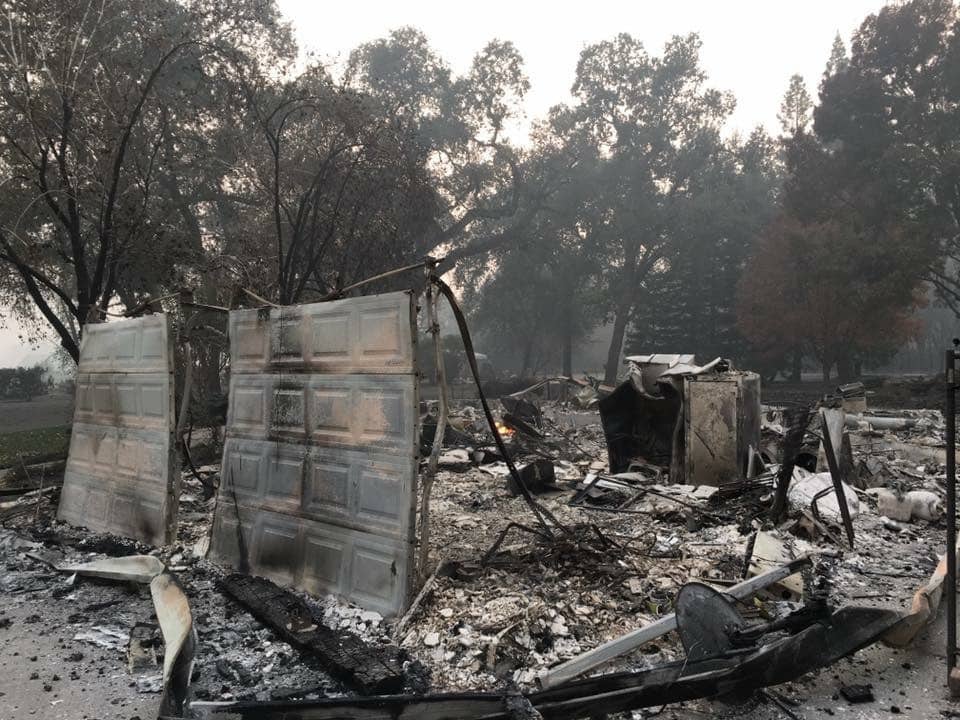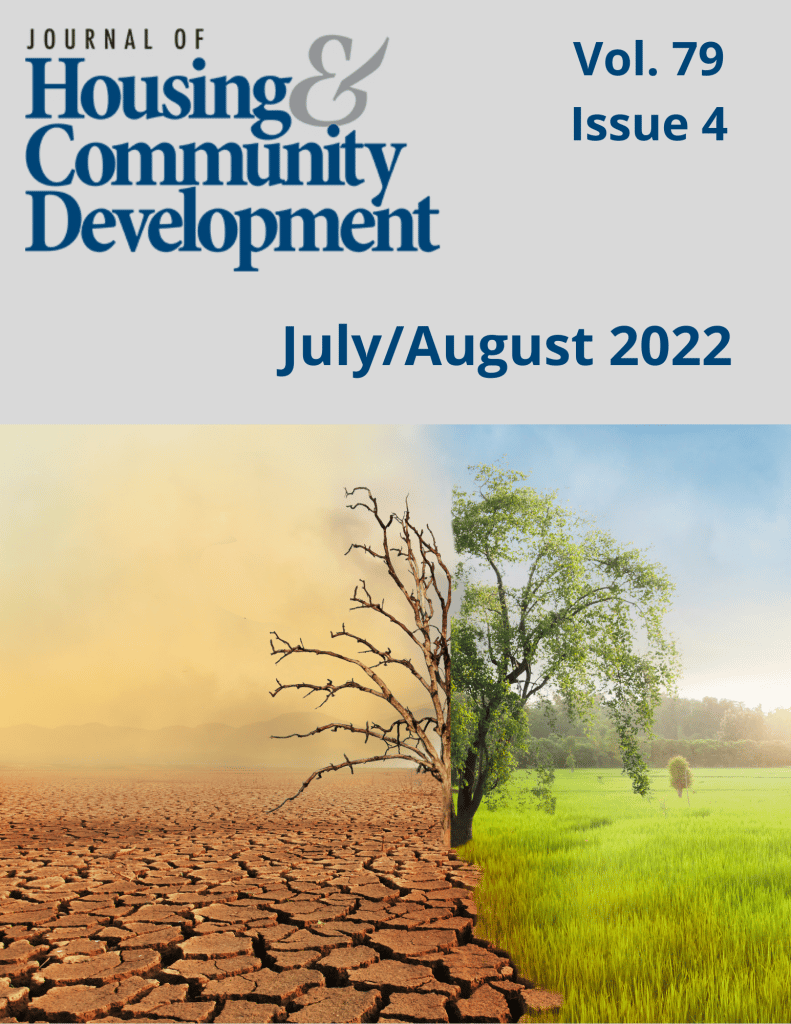How Climate Disasters Impact Housing Supply: A Case Study from Chico, Calif.

Across the country, communities struggle to keep up with adequate housing stock to meet the demands of people needing housing. Housing supply shortages existed long before the COVID-19 pandemic, but the health and economic crisis that followed only exacerbated the issue. It’s estimated the nation is short 3.8 million homes, double the number from 2012, according to the housing policy group Up For Growth.
Add in a climate-related disaster and that struggle only intensifies. One community that faced this problem head on lies in the rural forested area of Northern California.
On Nov. 8, 2018, the skies of Butte County became a hazy orange. A Pacific Gas and Electric Company (PG&E) power line fell after a period of extreme wind, igniting the dry brush surrounding it. As the wildfire grew, several towns in the county stood in the immediate path of it.
The Camp Fire spread quickly, burning down anything and everything in its path. Evacuation orders were given as people rushed to exit safely. For some, the only notice they received was from the sound of propane tanks exploding as the fire approached. In one day, 14,000 homes in Paradise or 90% of both commercial and residential property were destroyed. The most destructive and deadliest fire in California history killed 86 people.
As homes were taken, families poured into neighboring towns like Chico seeking refuge. In the days following the fires, about 50,000 people were displaced and about 20,000 of them sought shelter in Chico. The city, which was already facing a 1% vacancy rate, could not meet the dire need the emergency required.
“They were living in trailers and tents, under bridges, in backyards doubled up, tripled up in housing any way they could,” Executive Director of the Butte County Housing Authority (BCHA) Ed Mayer said.
Mayer, who’s worked for the BCHA since 2008, is no stranger to dealing with disasters. He previously worked in Santa Cruz County assisting with recovery after the Loma Prieta earthquake in 1989. The Camp Fire had the most severe impact on the elderly and disabled and those who lacked adequate fire or home insurance. The blaze destroyed some 14,000 affordable housing units, forcing thousands to look for homes.
For the many displaced, Butte County with its natural beauty of foliage and scenic views, was and is home. When city officials and BCHA staff began trying to rehouse people in other areas, such as the Bay Area or Los Angeles, most refused to leave. “This was their home,” Mayer said. “They would rather be on the streets than go elsewhere.”
Housing in Butte County quickly became nonexistent. Despite this, residents insisted on staying in their home in whatever form that came in.
With the population increase becoming inherently permanent, BCHA knew it had to act. The agency’s top concern was how to maintain its Section 8 program. Mayer described the housing situation in Chico as a game of musical chairs with residents fitting in where they could.
“How do you rebuild when a community like Paradise just got erased?” Mayer said.
The first step was to tend to the hundreds of families who were already voucher holders that lost their homes to the fire.
BCHA worked to recover its Section 8 program by pioneering the substantive project-basing of vouchers in Low-Income Housing Tax Credit (LIHTC) and Community Development Block Grant (CDBG) Disaster Recovery (DR) to subsidize new development projects. This was done with the assistance of partnerships with for-and non-profit affordable housing developers and operators, according to Mayer. The new norm led the Butte County Housing Authority to process 600 Section 8 voucher applications a day. However, as Mayer said, only about 1 in 15 find housing which leads to the voucher being returned.
“When you only have 6% of your applicants succeeding and securing housing, the Section 8 program almost becomes disingenuous,” Mayer said.
The California Congressional Delegation passed a special allocation in the appropriations bill for 9% LIHTC. This gave BCHA the ability to initiate several development projects.
“Community Development Block Grant disaster recovery funds started landing in California federal dollars in order to be dispersed for disaster recovery.”, Mayer said, three years after the fire left its destruction
With the help of the aid, the Authority has 21 affordable housing developments under construction, including some 1,146 units of regulated housing, in which the agency has committed 335 vouchers to project-basing. Prior to the fire, the rate of construction of affordable housing in Butte County was more along the lines of 60 to100 units in three to five years.
In addition to BCHA taking advantage of disaster-related special allocations of 9% LIHTC’s from Congress, and CDBG-DR funds, the private and non-profit sector has 1,649 units of LIHTC/CDBG-DR units in the disaster-response pipeline, supported by BCHA’s commitment of another 231 Section 8 vouchers for project-basing. All 2,825 units are scheduled to be placed in service in 2023 and 2024, the first being delivered around the first of this coming year.
But despite the strides to recover what was lost, it is still not enough to keep pace with demand.
“Here we are four years after the fire, and I can tell you, we’re very much still involved in disaster recovery,” Mayer said. “My message is, that we may be the first at this scale in this proportion, but we’re not going to be the last.”
Each community forced to grapple with a climate disaster will encounter its own challenges that may differ from the ones before, but Mayer says regardless it’s clear “no community has a perfect solution.”
The city of Chico, and the agencies that operate in the city, such as BCHA, utilized the tools available to them and succeeded in making a dent to address the housing shortage. However, Mayer is cautiously optimistic.
“When a community loses 90% of its fabric, and there’s no place for people to go, there’s no solution set for that kind of problem,” Mayer said.
More Articles in this Issue
NAHRO Honors Award Winning Agencies
Our Awards of Excellence winners are chosen by national juries and honored at the annual…- Allergy Technologies
Philadelphia Housing Authority (PHA) Implements Bed Bug Prevention Program
PHA awarded a $15 million, five-year contract to Allergy Technologies to implement ATAHC - a… - Yardi
Uplifting the Community with Local Solutions
Yardi’s experience can help your PHA do more with MTW Moving To Work (MTW) was… Addressing Bias within the HCV Program: Solutions to Combat Discrimination
The country is facing an unprecedented affordable housing crisis. With record high inflation, rapidly rising…Student Spotlight: Abby Strong
Abby Strong knew from a young age she wanted to help others. Growing up in…






